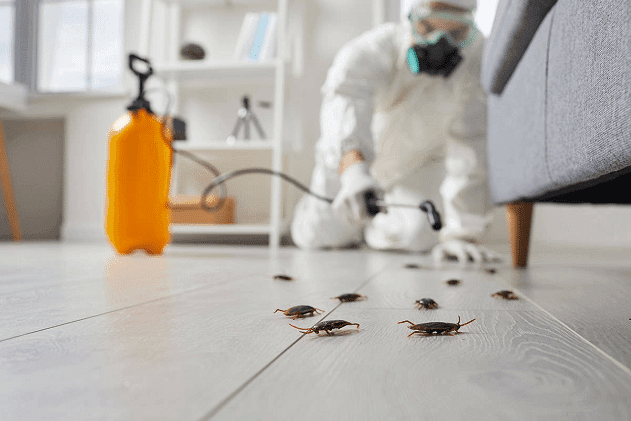10 Signs Your Care Home May Need Immediate Pest Control Services

Maintaining a clean and safe environment in a care home is not just a legal requirement but also a moral responsibility. When dealing with vulnerable residents, ensuring that the space is free from pests is crucial to safeguarding their health and well-being. Unfortunately, care homes are often attractive to pests due to the availability of food, warmth, and shelter.
Recognizing the early warning signs of infestation can save you from costly and potentially harmful consequences. Below, we discuss ten telltale signs that your care home may need immediate pest control services.
Droppings and Urine Stains
One of the most obvious signs of a pest problem is the presence of droppings or urine stains. Rodents such as rats and mice leave behind tiny, dark pellets, often found near food storage areas, cupboards, or hidden corners. Similarly, cockroach droppings appear as small, dark specks. Urine stains, often accompanied by an unpleasant odor, can also signal rodent activity.
Prompt action is crucial when these signs are detected. Delayed response can lead to contamination of food supplies and the spread of diseases such as salmonella. Engaging a pest control service for care homes ensures a swift and effective resolution to these problems.
Unexplained Noises
Do you hear scratching or rustling sounds in the walls, ceilings, or floors? These noises, often more noticeable at night, could indicate the presence of pests such as rodents. Birds or bats nesting in roof spaces can also cause unusual sounds.
Ignoring these noises might lead to structural damage, as some pests chew through wires, pipes, and insulation. Professional commercial pest control teams can identify the source of these sounds and implement measures to remove the pests while preventing reentry.
Nesting Materials
Rodents are notorious for creating nests using shredded paper, fabric, or insulation material. You might find these nests hidden in dark, undisturbed areas such as storage rooms, basements, or behind appliances.
If you spot nesting materials, it’s a clear indication that pests have settled in and may already be reproducing. Quick intervention from a care home pest control expert can prevent the infestation from spreading.
Property Damage
Chewed wires, gnawed furniture, and holes in walls or floors are clear signs of pest activity. Termites, for example, can cause severe structural damage to wooden fixtures, while rodents might chew through electrical wiring, leading to fire hazards.
Regular pest inspections and prompt action are essential to minimize damage. A professional pest control service will identify the pests responsible and provide targeted treatments to safeguard your property.
Unpleasant Odors
Foul smells in specific areas of your care home might indicate the presence of pests. Cockroaches emit a musty odor, while rodents produce a strong, ammonia-like smell from their urine. Dead pests trapped in walls or under floors can also create unbearable odors.
Such smells not only disrupt the living environment but can also distress residents and staff. Bringing in professionals ensures thorough cleaning and pest removal.
Visible Pests
Spotting live or dead pests is a clear and concerning indication of a potential infestation. While an isolated sighting might not immediately signal a severe issue, repeated encounters strongly suggest an escalating pest problem that demands attention.
In a care home, even the sight of one pest can raise concerns among residents and their families. An experienced pest control provider can help maintain your care home’s reputation and safety by addressing infestations promptly.
Insect Bites and Skin Irritations
If residents or staff are experiencing unexplained bites or skin irritations, bed bugs or fleas might be the culprits. These pests thrive in areas where people congregate and can easily spread in care homes.
Not only are these bites uncomfortable, but they can also lead to secondary infections. A thorough inspection and treatment plan from a professional can eradicate these pests and prevent future outbreaks.
Signs of Termites or Wood Damage
Termites are silent destroyers, often causing significant damage before they’re noticed. Look for hollow-sounding wood, blistering paint, or discarded wings near wooden structures.
In a care home, structural integrity is paramount for the safety of residents. Partnering with a commercial pest control service ensures regular inspections and preventative measures to keep termites at bay.
Pest Tracks or Grease Marks
Pests like rats and mice tend to follow the same paths, leaving behind greasy marks or tracks along walls, floors, or entry points. You might also notice smudges caused by their fur as they squeeze through tight spaces.
These tracks are a sign of frequent pest activity and should be addressed immediately. Professional care home pest control services can identify access points and eliminate the infestation at its source.
Increased Pest Activity in Surrounding Areas
If neighboring properties or businesses are experiencing pest problems, there’s a higher chance your care home could be next. Pests don’t respect boundaries and can easily migrate to nearby areas in search of food and shelter.
Being proactive is the best way to protect your care home. Regular maintenance and consultations with a pest control service for care homes can help you stay ahead of potential infestations.
Take Action to Protect Your Care Home Today
Pests in a care home are more than just an inconvenience—they pose serious health risks, tarnish your reputation, and can lead to costly damages. By being vigilant and addressing the signs of infestation early, you can maintain a safe and hygienic environment for residents and staff alike.
Partnering with a trusted commercial pest control provider ensures that your care home receives customized solutions tailored to its unique needs. Whether you’re dealing with rodents, insects, or termites, investing in professional care home pest control services safeguards the health and well-being of everyone under your care. Don’t wait for the problem to escalate—take action today to ensure your care home remains a sanctuary of safety and comfort.




